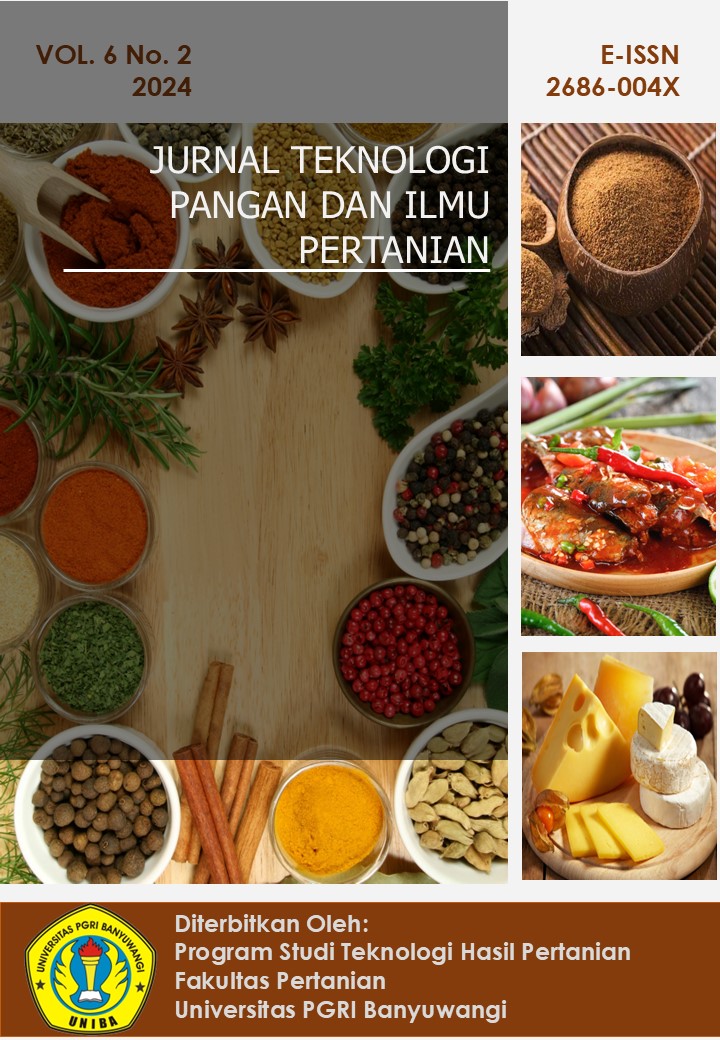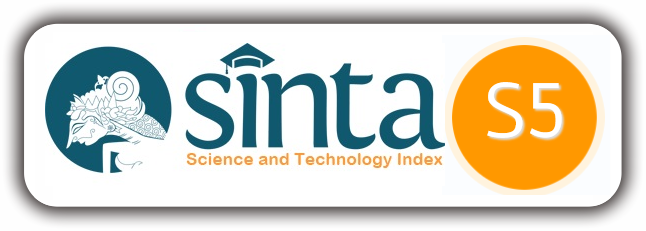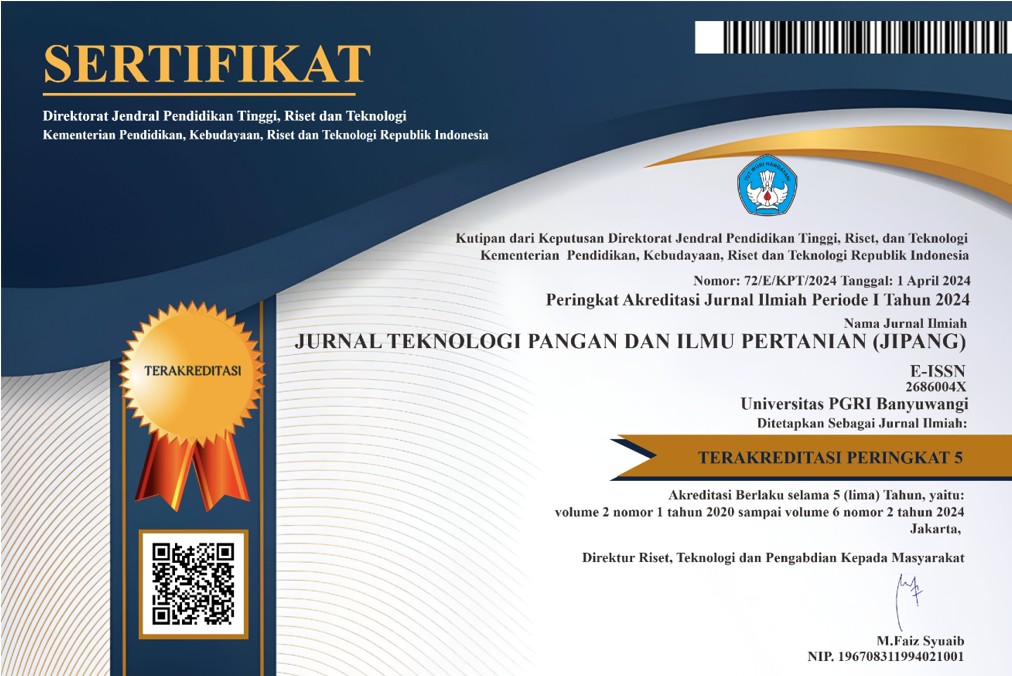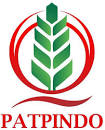EVALUASI KUALITAS AIR IRIGASI DI DAERAH GARUT BERDASARKAN pH, DHL, SUHU DAN DEBIT ALIRAN
DOI:
https://doi.org/10.36526/jipang.v6i02.4966Keywords:
pH, EC, temperature, flow rateAbstract
Irrigation water quality is significantly influenced by the surrounding environmental conditions, including human activities, land-use changes, and natural factors. Evaluating water quality is a crucial step to ensure the suitability of irrigation water for agricultural needs. This study aims to determine the suitability level of water quality against irrigation water standards in Garut. The method used in this study is a descriptive quantitative approach, focusing on the status of chemical and physical situs big77 parameters based on water analysis results. The results of the study on irrigation water quality in the Garut region revealed the following: The pH value of water from Bendung Ciroyom was 7,52, indicating alkalinity; the water sample from Sumber Mata Air Sirahna was 6,51, indicating acidity; and the water sample from Bendung Ciojar was 4,89, also indicating acidity.The electrical conductivity (EC) measurement of water from Bendung Ciroyom was 196 µS/cm, indicating a very good criterion; Sumber Mata Air Sirahna sample was 268 µS/cm, categorized as good; and the Bendung Ciojar sample was 343 µS/cm, also categorized as good.The temperature measurements showed values of 29°C for Bendung Ciroyom, 28°C for Sumber Mata Air Sirahna, and 30°C for Bendung Ciojar. According to Government Regulation No. 82 of 2001, there are no specific criteria for water temperature..The water flow rate analysis showed that Bendung Ciroyom had a flow rate of 0.40 m³/s, Sirahna Spring was 0.18 m³/s, and Bendung Ciojar was 1.50 m³/s. The pH, EC, temperature, and flow rate values mostly fall within the suitable range for irrigation purposes.
References
Agustira, R., & Sari Lubis, K. (2013). Kajian Karakteristik Kimia Air, Fisika Air Dan Debit Sungai Pada Kawasan Das Padang Akibat Pembuangan Limbah Tapioka. Jurnal Online Agroekoteknologi, 1(3), 615.
Amprin, A., Abdunnur, A., & Masruhim, Muh.
A. (2020). Kajian Kualitas Air dan Laju Sedimentasi Pada Saluran Irigasi Bendung Tanah Abang Di Kecamatan Long Mesangat Kabupaten Kutai Timur. Jurnal Pertanian Terpadu, 8(1), 105–118. https://doi.org/10.36084/jpt..v8i1.233
Asrori, M. K. (2021). Pemetaan Kualitas Air Sungai Di Surabaya. Envirotek: Jurnal Ilmiah Teknik Lingkungan, 13(2).
Chairul, M. (2024). Analisis Kualitas Air Berdasarkan Parameter Kimia, Fisik dan Biologi di Perairan Bendung Bekasi [Universitas Islam Negeri Jakarta].
https://repository.uinjkt.ac.id/dspace/han dle/123456789/81370
Irianto, I. K. (2015). Kualitas Air Dan Pertanian Berkelanjutan.http://repository.warmade wa.ac.id/id/eprint/278
Lampiran Pp No 82 Tahun 2001 Tentang Pegelolaan Kualitas Air Dan Pengendalian Pencemaran Air (2001).
Odoemena, S., Ogundeji, O., & Igomu, E. (2017). Assessment Of The Suitability Of Groundwater For Irrigation At Federal University Of Agriculture Makurdi, Benue State. International Journal of Plant & Soil Science, 17(4), 1–10. https://doi.org/10.9734/ijpss/2017/34777
Rohmawati, S. M., Sutarno, & Mujiyo. (2016). Kualitas Air Irigasi Pada Kawasan Industri Di Kecamatan Kebakkramat Kabupaten Karanganyar. In Caraka Tani- Journal of Sustainable Agriculture (Vol. 31, Issue 2).
Santoso, P. B. K. (2017). Laporan Penelitian Dosen Universitas Sahid Jakarta Status Mutu Air Sungai Citarum Di Provinsi Jawa Barat.
Downloads
Published
How to Cite
Issue
Section
License
Copyright (c) 2024 Anita Khairunnisa Anita

This work is licensed under a Creative Commons Attribution-ShareAlike 4.0 International License.











